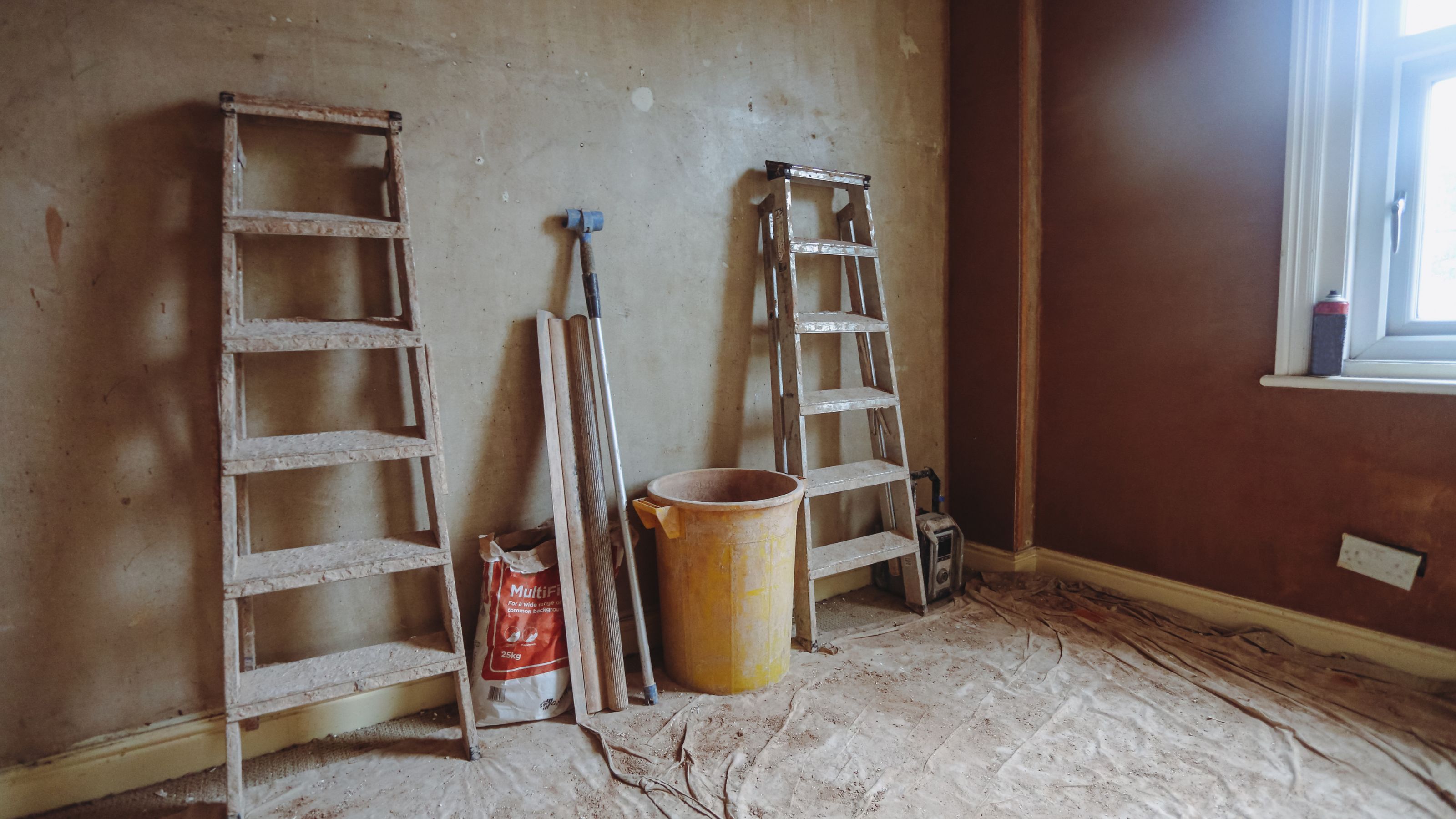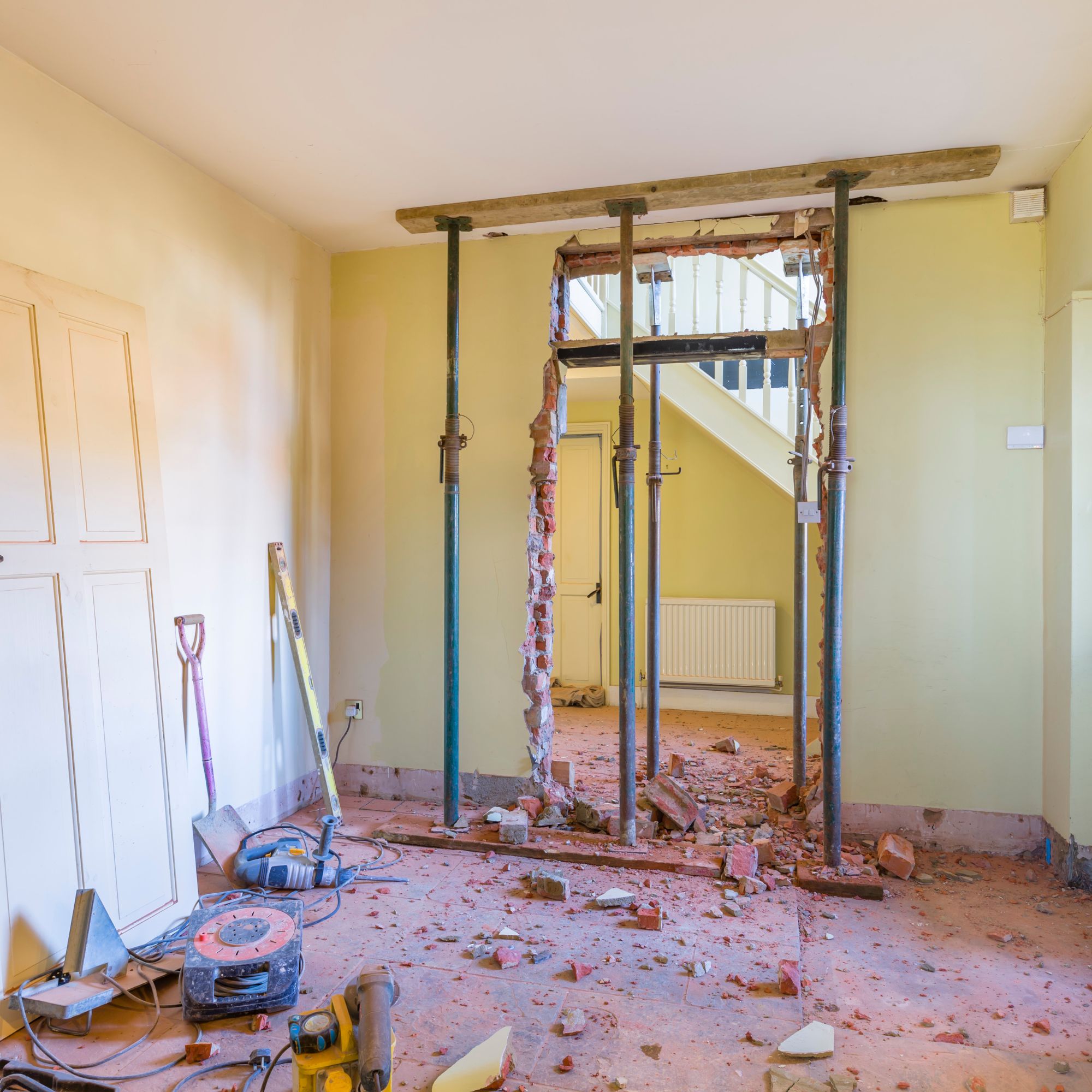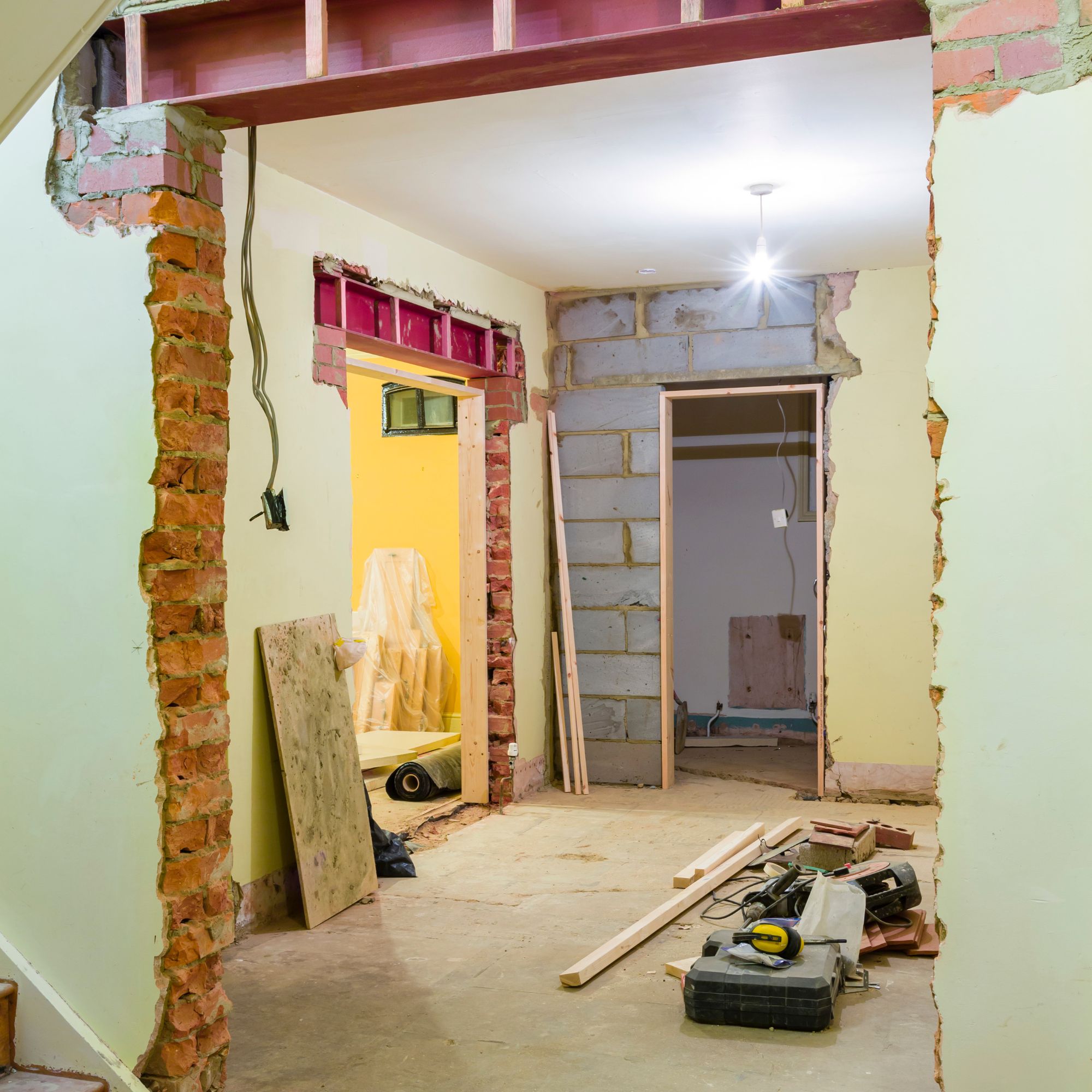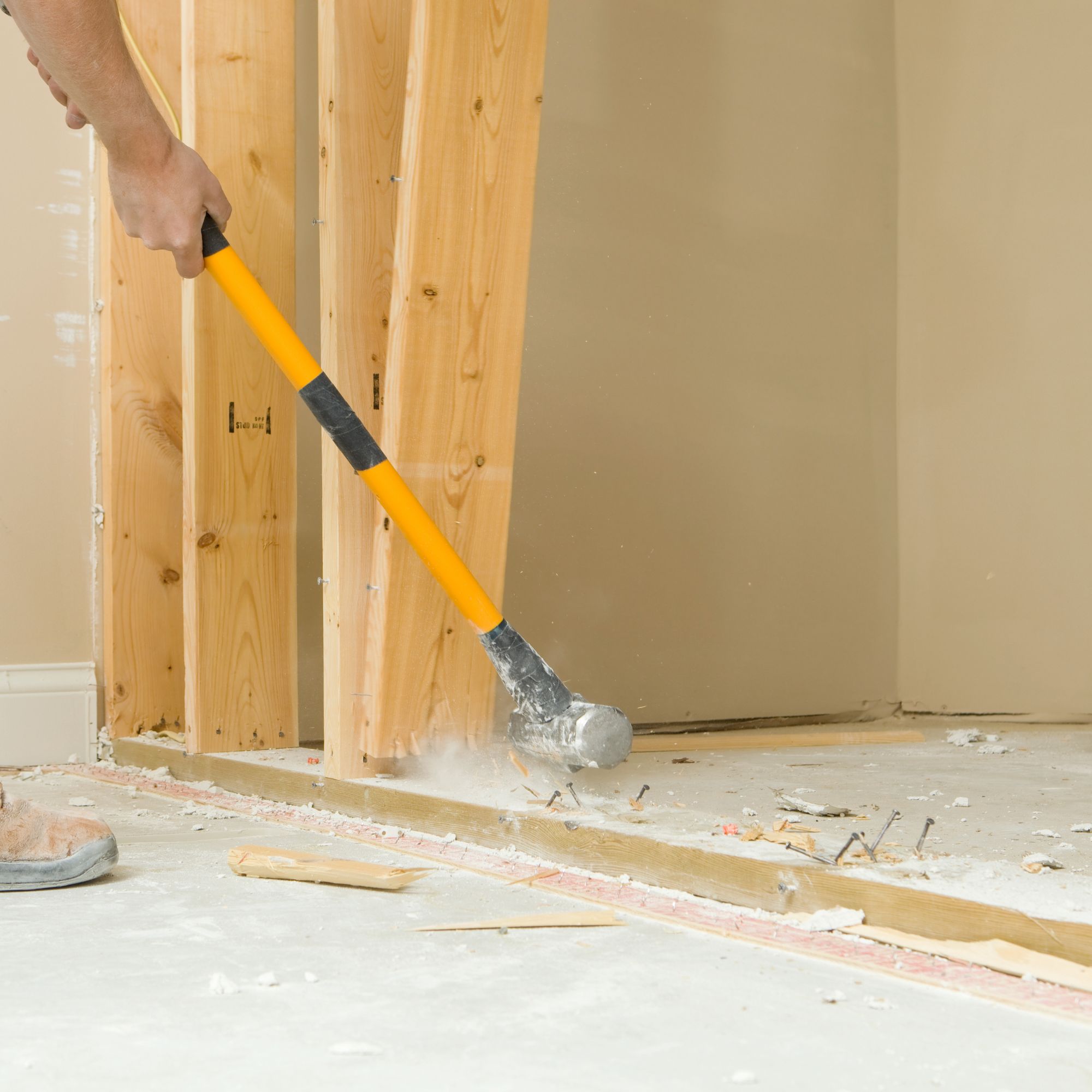I’m a renovation expert and this is how much you should expect to pay to knock down an interior wall, and the factors that can influence the price
Discover how much you should budget to remove a wall and open up your interior layout


Exactly how much does it cost to remove an internal wall? This is a question you should definitely be asking if you plan on remodelling the existing layout of your home, are extending, or renovating an older property.
It is crucial, at the same time as looking at how to remove an internal wall, that you get an idea of how much the task is likely to cost you. This will avoid any delays in the work as well as nasty surprises that leave you short for the other aspects of your building project.
We took a look at all the costs involved with this task, how you can avoid overspending and the factors that are likely to push prices up.
How much does it cost to knock down an internal wall?

How much it costs to remove an internal wall very much depends on the type of wall you are removing and who is doing the work.
'A lot of this will be dependent on the structural solution being proposed, as well as the size of steel work required,' explains architect Tina Patel of Architect Your Home. 'For example, is there a box frame of steel (when you create a box shape in steel with one steel in ground) or a goal post configuration with foundations?'
If you are removing a load-bearing wall, it will cost more than a non-load bearing wall due to the fact that professional input will be required, as well as structural support.

Tina Patel is a RIBA-chartered architect and director at Architect Your Home, with over 15 years' experience helping families transform their homes through thoughtful, stress-free design.
How much does it cost to remove an internal load-bearing wall?

The removal of a load bearing wall – one that gives support to another element of the house, such as a wall on the floor above – is more expensive than taking out a non-load bearing structure and is often a job that needs doing when building an extension.
Sign up to our newsletter for style inspiration, real homes, project and garden advice and shopping know-how
The additional costs are due to factors such as fees for a structural engineer to make the calculations for the additional supports that will be required to take the weight of whatever the old wall was holding up. You will also have to pay for the supports themselves.
'The cost to remove an internal wall will depend on factors such as the size of your home, the size of your wall, or whether your wall is a load bearing wall or a stud wall,' picks up Andy Simms, building expert at MyBuilder.com. 'A stud wall is simpler to remove and typically won’t cost more than £1,000. However, removing a load bearing wall requires further care and may require a fee of around £2,500.'
According to Checkatrade, the average cost of removing an internal load bearing wall is between £1,250–£1,750. Additionally, They estimate that a rolled steel joist (RSJ) will cost £800–£950 and that a structural engineer will charge around £200 per visit.

With over a decade of experience on the front line in construction as a multi-trader, Andy is uniquely placed in the construction industry to help bridge the gap between tradespeople and product managers with his role at MyBuilder.com.
How much does it cost to remove a non-load bearing wall?

If it is a non-load bearing, or partition wall you are dealing with, costs will be lower.
If you are calling in a builder to carry out the work, you will obviously need to factor in the labour costs. Removing the wall should take no longer than a couple of days and the average builder's day rate is approximately £400-£500.
Even if you plan on carrying out the work yourself, just as with many other DIY home repairs and tasks, you will still need to factor in the cost of materials and any tools you require for the job.
Which factors affect how much it costs to remove an internal wall?

Aside from whether or not the wall you are removing is load bearing, there are several other factors that will influence how much this job costs you.
The size of the wall will play a part, as well as whether or not it will affect a wall you share with your neighbour – also known as a Party Wall.
If you live in a terraced or semi-detached house, you may find that the new beams needed to support walls that were once held up by a load-bearing wall, might need to be supported by shared walls. You will need to involve a Party Wall surveyor and, possibly, draw up a Party Wall Agreement.
'Most party wall surveyors charge an hourly rate that is usually between £90 and £450 an hour,' reveals Angela Kerr, director and editor at HomeOwners Alliance.
Are there any hidden costs to be aware of?
Along with labour costs and the price you pay for any tools and equipment, there are other elements you should be aware of if you want to go into this project fully aware of what you will eventually end up paying.
'Don’t forget, removal of the wall is also likely to mean new flooring, potentially a new ceiling and quite significant disruption that will require replastering and quite a lot of decoration,' points out Tina Patel. 'As a result, when looked at as a whole, the typical removal of a load bearing wall is likely to leave not much change from £10,000 plus VAT.
'Costs will increase depending on the complexity of any temporary supports required and what size the opening is,' continues Tina. 'If the wall is non-load bearing, as there are no structural supports, that cost would be removed, but the transitions between the two spaces will still need to be accounted for.'
'There are a number of repair jobs you will likely need to complete after your internal wall is removed, such as plastering, and decorating where your old wall used to be,' adds Andy Simms. 'This will amount to extra cost, but there are ways you can keep the cost down. If you rectify only the line of the old wall, instead of the whole new space, this may not leave your new space looking perfect, but the cost won’t be as hefty.'
You may also have to get specialist renovation insurance if your existing policy doesn't cover removing a wall, so bear that in mind too. All of this can be covered if you avoid the cardinal wall removal mistake.
FAQs
Will removing an internal wall add value to your home?

This very much depends on how the removal of the wall will change the layout of your home. For many people, open plan works well, but for busy households and those requiring quiet space for working or relaxing, a broken plan layout can be better.
That said, if you are removing a wall to create an open plan kitchen diner, you can be pretty confident that this is a job well worth doing.
The FMB recently carried out research that suggested removing an internal wall to create this sort of space could add more than £48,000 to the average home in London.
Before you get too excited with the sledgehammer, make sure you have carefully considered the pros and cons of knocking down the wall. Choosing wrongly could prove costly.

Natasha has been writing about everything homes and interiors related for over 20 years and, in that time, has covered absolutely everything, from knocking down walls and digging up old floors to the latest kitchen and bathroom trends. As well as carrying out the role of Associate Content Editor for Homebuilding & Renovating for many years, she has completely renovated several old houses of her own on a DIY basis.